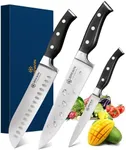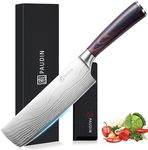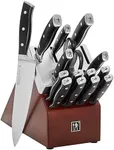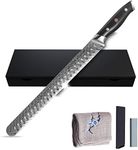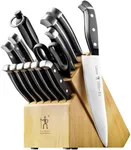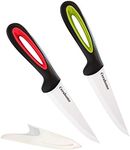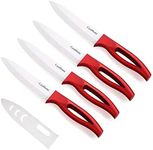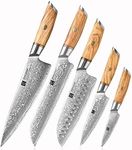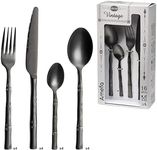Buying Guide for the Best Sharpest Kitchen Knives
Choosing the right kitchen knife can significantly enhance your cooking experience. A sharp, well-balanced knife can make food preparation easier, safer, and more enjoyable. When selecting a kitchen knife, it's important to consider several key specifications to ensure you pick the best fit for your needs. Here are the most important factors to consider and how to navigate them.Blade MaterialThe material of the blade affects the knife's sharpness, durability, and ease of maintenance. Common materials include stainless steel, high-carbon steel, and ceramic. Stainless steel is resistant to rust and easy to maintain, making it a good all-around choice. High-carbon steel is extremely sharp and holds its edge well but requires more maintenance to prevent rust. Ceramic blades are incredibly sharp and lightweight but can be brittle and prone to chipping. Choose a material based on your willingness to maintain the knife and your preference for sharpness and durability.
Blade EdgeThe edge of the blade determines how the knife cuts and how often it needs to be sharpened. There are straight edges, serrated edges, and granton edges. Straight edges are versatile and can be used for most tasks, but they require regular sharpening. Serrated edges are great for cutting through tough or crusty surfaces, like bread, and stay sharp longer but are harder to sharpen. Granton edges have small indentations that prevent food from sticking to the blade, making them ideal for slicing. Consider what types of food you will be cutting most often to choose the right edge.
Blade LengthBlade length affects the knife's versatility and ease of use. Common lengths range from 6 to 12 inches. Shorter blades (6-8 inches) are easier to control and are ideal for tasks like chopping vegetables or mincing herbs. Longer blades (9-12 inches) are better for slicing larger items like meat or bread. If you are new to cooking, a medium length (8 inches) is a good starting point as it offers a balance of control and versatility.
Handle MaterialThe handle material impacts the knife's comfort, grip, and durability. Common materials include wood, plastic, and composite. Wood handles offer a traditional look and good grip but require more maintenance to prevent cracking. Plastic handles are durable, easy to clean, and often have a textured grip for safety. Composite handles combine the best of both worlds, offering durability and a comfortable grip. Choose a handle that feels comfortable in your hand and provides a secure grip, especially if you will be using the knife frequently.
Weight and BalanceThe weight and balance of a knife affect how it feels in your hand and how easy it is to control. A well-balanced knife will feel comfortable and stable, with the weight evenly distributed between the blade and the handle. Heavier knives can make cutting through tough foods easier but may cause fatigue with prolonged use. Lighter knives are easier to maneuver and less tiring to use but may require more effort for tougher tasks. Try holding different knives to see which weight and balance feel best for you.
TangThe tang is the part of the blade that extends into the handle. A full tang, where the blade extends the entire length of the handle, provides better balance and durability. Partial tangs are lighter and may be sufficient for lighter tasks but are generally less durable. If you plan to use the knife for heavy-duty tasks, a full tang is recommended for its strength and stability.


